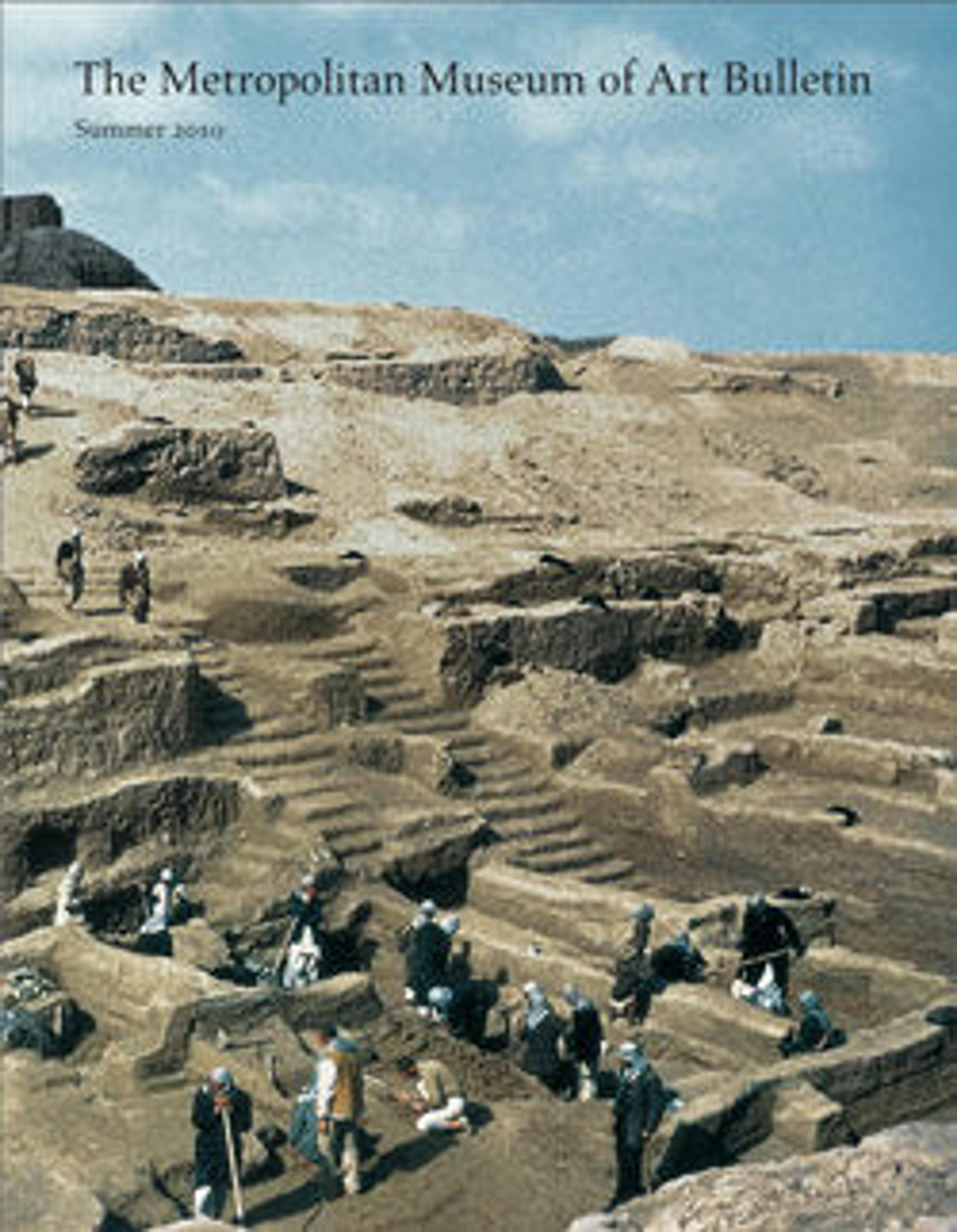Pin in the form of a lion
One of the most characteristic objects from Hasanlu is the so-called lion pin. Over sixty have been excavated at the site, most in Burned Building II, where they are associated—in groups of one, two, or three—with the many skeletons of individuals killed within the building at the time of its destruction. The pin, presumably used to fasten a garment, is a solid bronze reclining lion with the front paws extended and joined at the rear to an iron pin. A bronze chain attached to a loop created by a curve in the tail held the pin securely to the garment. The lion pins found at Hasanlu vary in size and weight as well as in decorative details. This example has a long mane running the length of its back. An upward curling tongue protrudes from its wide gaping mouth, and globular eyes are set on either side of its flattened head.
Artwork Details
- Title: Pin in the form of a lion
- Period: Iron Age II, Hasanlu Period IV
- Date: ca. 9th century BCE
- Geography: Iran, Hasanlu
- Culture: Iran
- Medium: Bronze, iron
- Dimensions: 2 3/8 × 5 1/8 × 1 1/16 in. (6.1 × 13 × 2.7 cm)
- Credit Line: Purchase, Mrs. Constantine Sidamon-Eristoff Gift, 1961
- Object Number: 61.100.10
- Curatorial Department: Ancient West Asian Art
More Artwork
Research Resources
The Met provides unparalleled resources for research and welcomes an international community of students and scholars. The Met's Open Access API is where creators and researchers can connect to the The Met collection. Open Access data and public domain images are available for unrestricted commercial and noncommercial use without permission or fee.
To request images under copyright and other restrictions, please use this Image Request form.
Feedback
We continue to research and examine historical and cultural context for objects in The Met collection. If you have comments or questions about this object record, please contact us using the form below. The Museum looks forward to receiving your comments.
